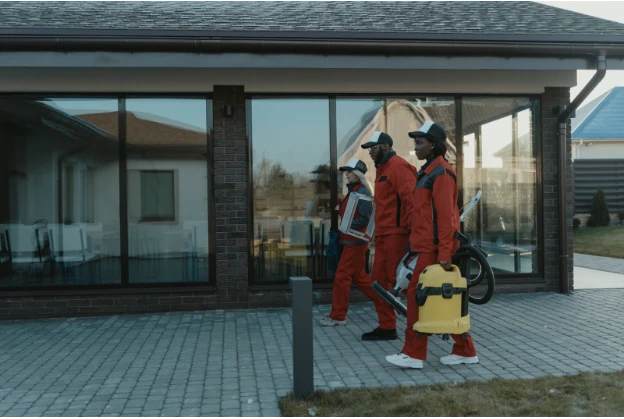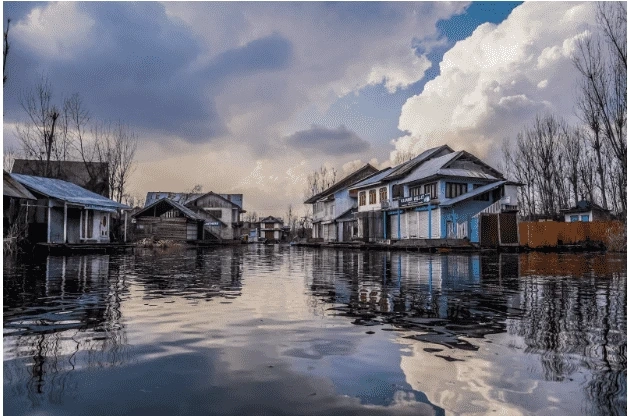A flood can be devastating, leaving your home and belongings damaged and covered in mud and sewage. If you have experienced a flood, it is important to take the necessary steps to clean everything up properly to avoid any health risks. In this guide, Ak assainissement walks you through the entire process of cleaning up after a flood, room by room!
Cleaning up after a flood: Guidelines
A few key guidelines can help you make things easier as you\'re cleaning up. Here are some of them:
- Wear protective clothing: Be sure to wear gloves, a face mask, and waterproof boots while you are cleaning. You never know what might be in the water and it\'s better to be safe than sorry!
- Start with the outside: Start by cleaning up any debris around your home. Check if sewage has clogged your drains and have them DÉBOUCHAGE CANALISATION by a sanitation company.
- Focus on one room at a time: Trying to do too much at once will only make the process more overwhelming. Start with one room and then move on to the next.
- Make a plan: Having a plan and being organized will help you stay on track and avoid forgetting anything.
- Rent out a lifting pump: If you have a lot of water to remove from your home, you may consider renting out a lifting pompe. This will make the job a lot easier and faster.
- Hire a sanitation company: If you have sewage in your home, it is important to hire a professional sanitation company with CURAGE CANALISATION services to remove it. This is not something you should try to do on your own!
- Start with the biggest messes first: When you are ready to start cleaning, it is important to tackle them first. This way you can work your way down to the smaller messes.
Each room in your house will require a different approach to cleaning up after a flood. Here is a step-by-step guide on how to clean each room:
Cleaning up the Living room
After a flood, the living room will likely be one of the dirtiest rooms in your house because flood waters and mud can track in easily. Let\'s go over it step-by-step:
1. Remove all of the furniture.
As long as the furniture is not too heavy, you can try to clean it outside. If it is too heavy or you don\'t have a good place to clean it, you can throw it away and replace it later.
You must also remove the carpet if the living room is flooded. But if your carpet holds no particular value to you, it might be best just to throw it away. Assuming you have removed all of the furniture and carpet, the next step is to:
2. Wash the walls and ceiling.
Use a mild detergent and warm water to wash the walls and ceiling. You may need to use a sponge or brush to remove any stubborn dirt or stains. Be sure to rinse the walls and ceiling afterward.
You might also benefit from getting a humidifier to help prevent mold growth.
Cleaning up the Kitchen
The kitchen can be one of the most challenging rooms to clean up after a flood because there are so many different surfaces and appliances. Let\'s go over it step-by-step:
1. Start with the big appliances
The first order of business is to clean out the refrigerator and freezer. Throw away any food that has come into contact with flood waters.
Next, you will want to unplug and empty the dishwasher. Be sure to discard dirty dishes and wash all the removable parts in hot, soapy water.
Now is also a good time to clean out your oven and stove. Start by removing the oven racks and washing them in hot, soapy water. Then, you can clean the inside of the oven with a mixture of baking soda and water.
As for the stove, clean all the burner grates and drip pans in hot, soapy water. It would help if you also wiped down the stovetop with a sponge or brush.
2. Clean the cabinets.
If your cabinets are made of wood, you will want to clean them with a mixture of vinegar and water. You can use a mild detergent and warm water if they are laminate.
Be sure to wipe down the inside and outside of the cabinets. Remove all the contents and wash them individually.
It would also be a good idea to disinfect the cabinets with a mixture of bleach and water.
3. Wash the dishes.
You will need to wash all the dishes by hand. Fill up the sink with hot, soapy water and start scrubbing!
Remember to be extra careful when washing dishes after a flood because there is a higher risk of getting sick from bacteria. After washing the dishes, be sure to rinse them with clean water.
You might also consider using disposable plates and utensils until you can wash all the dishes.
4. Sanitize the countertops.
Use a mixture of bleach and water to disinfect the countertops. Be sure to wipe down the backsplash as well.
Let the countertops air dry or wipe them down with a clean towel. And that\'s it!
Cleaning up the Bedroom
The bedroom is usually one of the easier rooms to clean up after a flood. But there are still a few things you need to do:
1. Remove all the bedding and clothes.
Start by removing all the bedding, including the mattress and box spring. If they are wet, you will need to throw them away and replace them later.
You should also remove any clothes or shoes that are wet. Be sure to put them in a plastic bag, so they don\'t get moldy.
If you have a lot of clothes, you might need to wash them in small batches. Start by sorting the clothes into piles based on color. Then, you can wash them in hot water with a mild detergent. Hang the clothes up to dry as soon as possible.
2. Vacuum the floor.
Use a wet/dry vacuum to remove any water from the floor. If you don\'t have a wet/dry vacuum, you can rent one from a hardware store.
Be sure to vacuum the entire floor under the bed and in the closet.
After vacuuming, you should mop the floor with a disinfectant. This will help kill any bacteria that might be present.
3. Clean the windows.
Start by removing any curtains or blinds that are wet. These can usually be washed in the washing machine.
Next, you will want to clean the windows themselves. Use a sponge or brush to scrub the windows with soap and water. Dry them immediately afterward, so they don\'t get streaks.
Cleaning up the Bathroom
The easiest room to clean probably goes to the bathroom. But even so, there are still a few things you need to do:
1. Start by removing all the towels and clothes.
Take all the towels and clothes out of the bathroom. If they are wet, you\'ll need to wash them in the washing machine. You should also remove any rugs or mats and throw them into the washing machine. Put all the dirty laundry in a plastic bag to prevent it from getting moldy.
2. Remove any wet shampoo, soap, or other toiletries.
Typically, anything wet in the bathroom must be thrown away. This includes shampoo, soap, toothpaste, etc. And while it might pain you to do, that includes any makeup you have lying around the bathroom.
3. Clean the tub, shower, and sink.
Start by scrubbing the tub, shower, and sink with a sponge or brush. Use hot water and soap to remove any dirt or grime.
After scrubbing the bathroom fixtures, you should disinfect them with a mixture of bleach and water. Be sure to let them air dry or wipe them down with a clean towel.
Cleaning up the basement/cellar

If your home has a basement or cellar, this is probably where the flood water entered and where most of the flood water will still be. Here\'s what you need to do:
1. Remove any wet items from the basement.
This includes any furniture, boxes, or other belongings. If possible, put these items outside in the sun to dry. Otherwise, you can put them in a plastic bag to prevent them from getting moldy.
2. Vacuum the floor.
Use a wet/dry vacuum to remove as much water from the floor as possible. If you don\'t have a wet/dry vacuum, you can rent one from a hardware store.
However, you should not vacuum the floor if the flood water contains sewage. In this case, it\'s best to hire a professional sanitation company to clean the basement. Sewage can contain harmful bacteria that can make you sick.
3. Clean the walls.
Scrub the walls with a sponge or brush. Use hot water and soap to remove any dirt or grime.
After scrubbing, you should disinfect the walls with a mixture of bleach and water. Be sure to let them air dry or wipe them down with a clean towel.
Final Thoughts
Recovering from a flood can be a daunting task. But by following the steps outlined in this guide, you can get your home back to normal in no time. Remember to take safety precautions when working with flood water, as it can contain harmful bacteria. If you\'re ever unsure about something, it\'s always best to consult a professional. Good luck!


